Aer Lingus is the flag carrier of Ireland. Founded by the Irish Government, it was privatised between 2006 and 2015 and it is now a wholly owned subsidiary of International Airlines Group (IAG). The airline's head office is on the grounds of Dublin Airport in Cloghran, County Dublin.
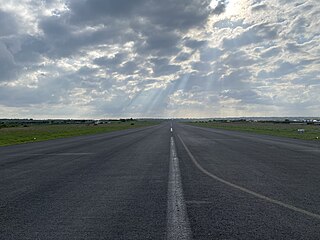
Galway Airport, , was a regional airport located at Carnmore, 4 NM east of Galway City, County Galway, Ireland, managed by Corrib Airport Limited. Its last scheduled passenger traffic was on 31 October 2011, when Aer Arann ceased commercial operations at the airport. At 1289 m (4230 ft), the runway is too short to handle most jet airliners and so scheduled services were restricted to turboprop aircraft or small executive jets. At peak, the airport served over 300,000 passengers annually, with 16 destinations. In November 2013, it was announced that the airport's aviation licence would cease but in January 2015, it was announced that the airport would reopen for private and commercial flights; as of December 2015 the airport remained "closed for commercial traffic until further notice". County Galway has a second airport, serving the Aran Islands, west of the city.

Stavanger Airport, commonly just known as Sola, is an international airport located in Rogaland county, Norway. The airport is located 6 NM southwest of the centre of the city of Stavanger inside the neighboring municipality of Sola and it serves the Stavanger, Sola, Sandnes area as well as serves as a regional hub for southwest Norway. It is Norway's third-busiest airport, with both fixed-wing aircraft and helicopter traffic for the offshore North Sea oil installations. In addition, the Royal Norwegian Air Force operates Westland Sea King search and rescue helicopters from Sola Air Station.
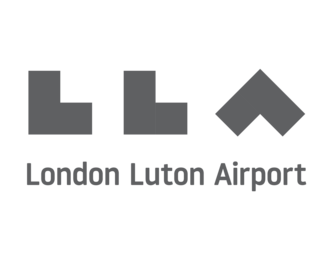
London Luton Airport is an international airport located in Luton, Bedfordshire, England, situated 1.7 miles (2.7 km) east of the town centre, and 29 miles (47 km) north of Central London. The airport is owned by London Luton Airport Ltd (LLAL), a company wholly owned by Luton Borough Council, and operated by London Luton Airport Operations Ltd (LLAOL).

Dublin Airport Irish: Aerfort Bhaile Átha Cliath is an international airport serving Dublin, Ireland. It is operated by DAA. The airport is located in Collinstown, 7 km (4.3 mi) north of Dublin, and 3 km (1.9 mi) south of the town of Swords. In 2019, 32.9 million passengers passed through the airport, making it the airport's busiest year on record. It is the 13th busiest airport in Europe, and is the busiest of Ireland's airports by total passenger traffic; it also has the largest traffic levels on the island of Ireland, followed by Belfast International Airport.

The BAC One-Eleven is an early jet airliner produced by the British Aircraft Corporation (BAC). Originally conceived by Hunting Aircraft as a 30-seat jet, before its merger into BAC in 1960, it was launched as an 80-seat airliner with a British United Airways (BUA) order on 9 May 1961. The prototype conducted its maiden flight on 20 August 1963, and it was first delivered to BUA on 22 January 1965. The 119-seat, stretched 500 series was introduced in 1967. Total production amounted to 244 until 1982 in the United Kingdom and between 1982 and 1989 in Romania where nine Rombac One-Elevens were licence-built by Romaero.

London Southend Airport is a minor international airport situated on the outskirts of Southend-on-Sea in Essex, England, approximately 36 miles (58 km) from the centre of London. The airport straddles the boundaries between the city of Southend-on-Sea and the Rochford District.
Loganair is a Scottish airline based at Glasgow Airport near Paisley, Scotland. Branded as Scotland's Airline, it is the largest regional airline in the UK by passenger numbers and fleet size.
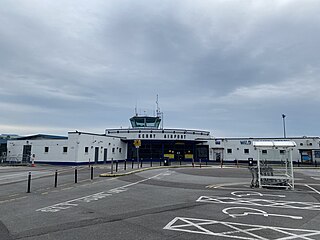
Kerry Airport, often called Farranfore Airport, is an international airport in Farranfore, County Kerry, Ireland. It is 7 nautical miles north off the Ring of Kerry and 8 nautical miles southeast of the county town, Tralee. Passenger services are operated by Ryanair and more recently French airline Chalair. In 2022, Kerry Airport handled 355,043 passengers; a decrease of 4% since 2019.

Sligo Airport is located in Strandhill, County Sligo, 5 NM west of Sligo, at the end of the R277 road, in Ireland. The airport is a small regional airport and has had no scheduled routes since 2011. It is the home of the Sligo Aero Club and the northwest base for the Irish Coastguard. Private flight training, skydiving and charity jumps are all operated from the airport. In 2002 a Euroceltic Airways Fokker F27 aircraft carrying the band Aslan overshot the runway and the nose dipped into the sea. The accident caused no casualties.
AirUK was a wholly privately owned, independent regional British airline formed in 1980 as a result of a merger involving four rival UK-based regional airlines. British and Commonwealth (B&C)-owned British Island Airways (BIA) and Air Anglia were the two dominant merger partners. The merged entity's corporate headquarters were originally located at Redhill, Surrey, the location of the old BIA head office. It subsequently relocated to Crawley, West Sussex. In addition to the main maintenance base at Norwich Airport, there also used to be a second major maintenance base at Blackpool Airport. This was closed down following Air UK's major retrenchment during Britain's severe recession of the early 1980s. In 1987, Air UK established Air UK Leisure as a charter subsidiary. The following year, Air UK shifted its headquarters to London Stansted Airport. When Stansted's new Norman Foster-designed terminal opened in 1991, the airline became its first and subsequently main tenant.
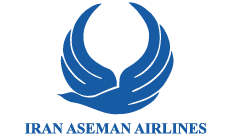
Iran Aseman Airlines is the third-largest Iranian airline headquartered in Tehran. It operates scheduled domestic passenger services and regional international services.

Donegal Airport is a regional airport in Ireland, serving County Donegal and the north-west. It is located on the coast, 2 NM south-west of Bunbeg in Carrickfinn, a townland in The Rosses, a district in north-west County Donegal. It is about a 15-minute drive from Dungloe and Gweedore and 45 minutes from Letterkenny. It was generally known until the 1990s, and is still popularly known within County Donegal, as Carrickfinn Airport, from which its airport code (CFN) is derived.
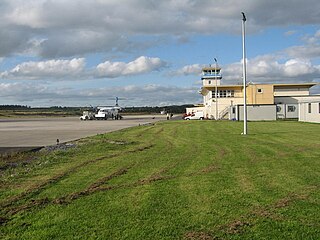
Waterford Airport is located in Killowen, 4 NM southeast of Waterford. It serves southeastern Ireland. The airport is operated by Waterford Regional Airport plc.
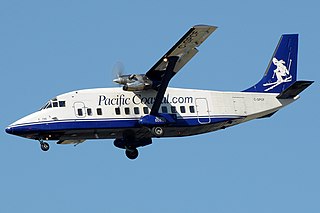
The Short 360 is a commuter aircraft that was built by UK manufacturer Short Brothers during the 1980s. The Short 360 seats up to 39 passengers and was introduced into service in November 1982. It is a larger version of the Short 330.

Aer Lingus Regional is an Aer Lingus brand which is used for commuter and regional flights. Aer Lingus Regional scheduled passenger services operate primarily from Ireland to the United Kingdom, France, and the Channel Islands, and also from Belfast, Northern Ireland. Services were operated by Aer Arann and then its successor Stobart Air until the latter's closure in June 2021. The contract for the franchise was then awarded to Emerald Airlines and services resumed in early 2022.
Stobart Air was an Irish regional airline based in Dublin, originating in 1970 and closing in 2021. It operated scheduled services under the brands Aer Lingus Regional, BA CityFlyer and KLM Cityhopper on behalf of their respective owners. Stobart Air had operating bases in Cork, Dublin and Belfast for Aer Lingus Regional.
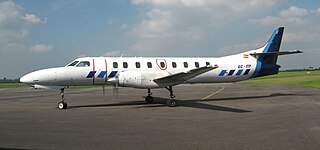
Manx2 Flight 7100 was a scheduled commercial flight from Belfast, Northern Ireland, to Cork, Republic of Ireland. On 10 February 2011, the Fairchild Metro III aircraft flying the route with ten passengers and two crew on board crashed on its third attempt to land at Cork Airport in foggy conditions. Six people, including both pilots, died. Six passengers survived but were injured, four of them seriously.













